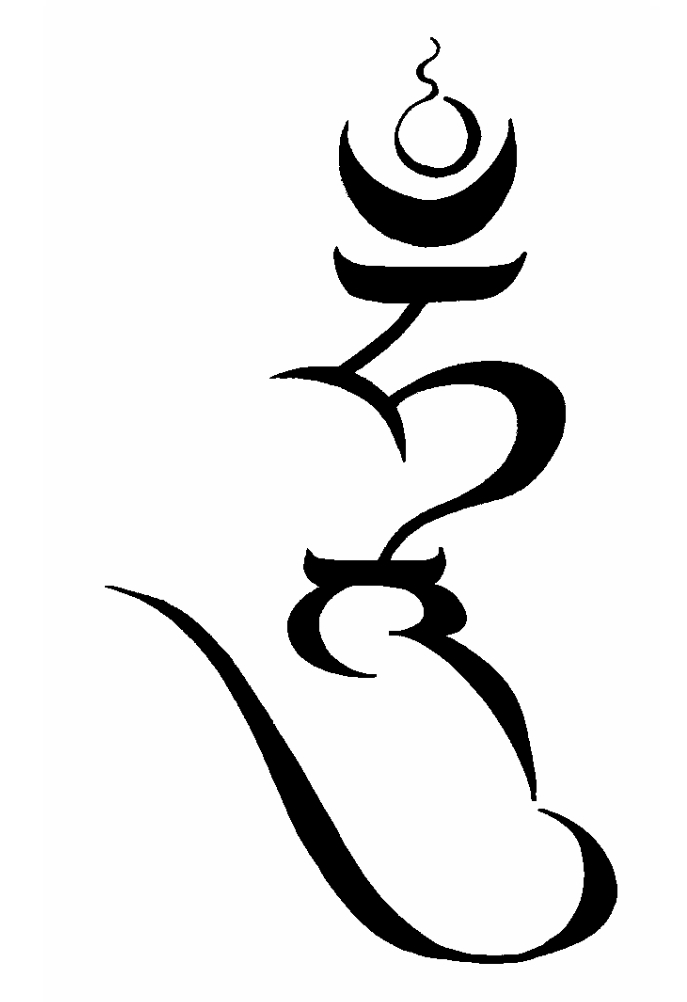
Hung
the symbol of the sphere of realised manifestation
Hung contains the practices of kyab (sKyabs) and changchub sem (byang chub sems) – refuge and Bodhicitta; and simply by singing Hung with this knowledge one can accomplish these. Hung is the heart syllable, the seed syllable of Padmasambhava and also of Yeshé Tsogyel. The syllable Hung has five sections which—from bottom to top—represent the five elements of earth, water, fire, air and space. With the addition of the gTérma mark, the five sections of the syllable become six, representing the six realms. In this form the colours are portrayed in dusky, muted version of the five elemental colours for the realms of the yidag, animals, human, jealous gods and god, with the gTérma mark in black for the hell realms.Hung is of primary importance as the root of the practice of Dorje Tsig dün. In the Lama’i Naljor of Ma-gÇig Labdrön a blue hung is visualised at her heart centre. We then receive rays of blue light and the hung appears at our heart centre, unifying our experience of ourselves as manifest beings with the apparitional manifestation of Ma-gÇig Labdrön.
Hung is the symbol of the sphere of realised manifestation – Nirmanakaya, trülku (sPruls sKu). It is the world of tangible appearances into which we are born as beginninglessly enlightened beings. Hung is the soporific, seductive, or searing scenario which can be transformed at any moment into the peaceful, joyous, or wrathful dance of the khandros and pawos.
As the powerful symbol of active compassion, Hung communicates with consummate versatility to those with whom we have no evident connection, and addresses those who are emotionally & conceptually estranged, and who have cut themselves off from our ability to offer our friendship and help. Hung speaks with the hot blood of kindness, in the language of uncompromising warmth, to those who would consider themselves to be our enemies.
